Families Lost and Found: Pre and Post Internet
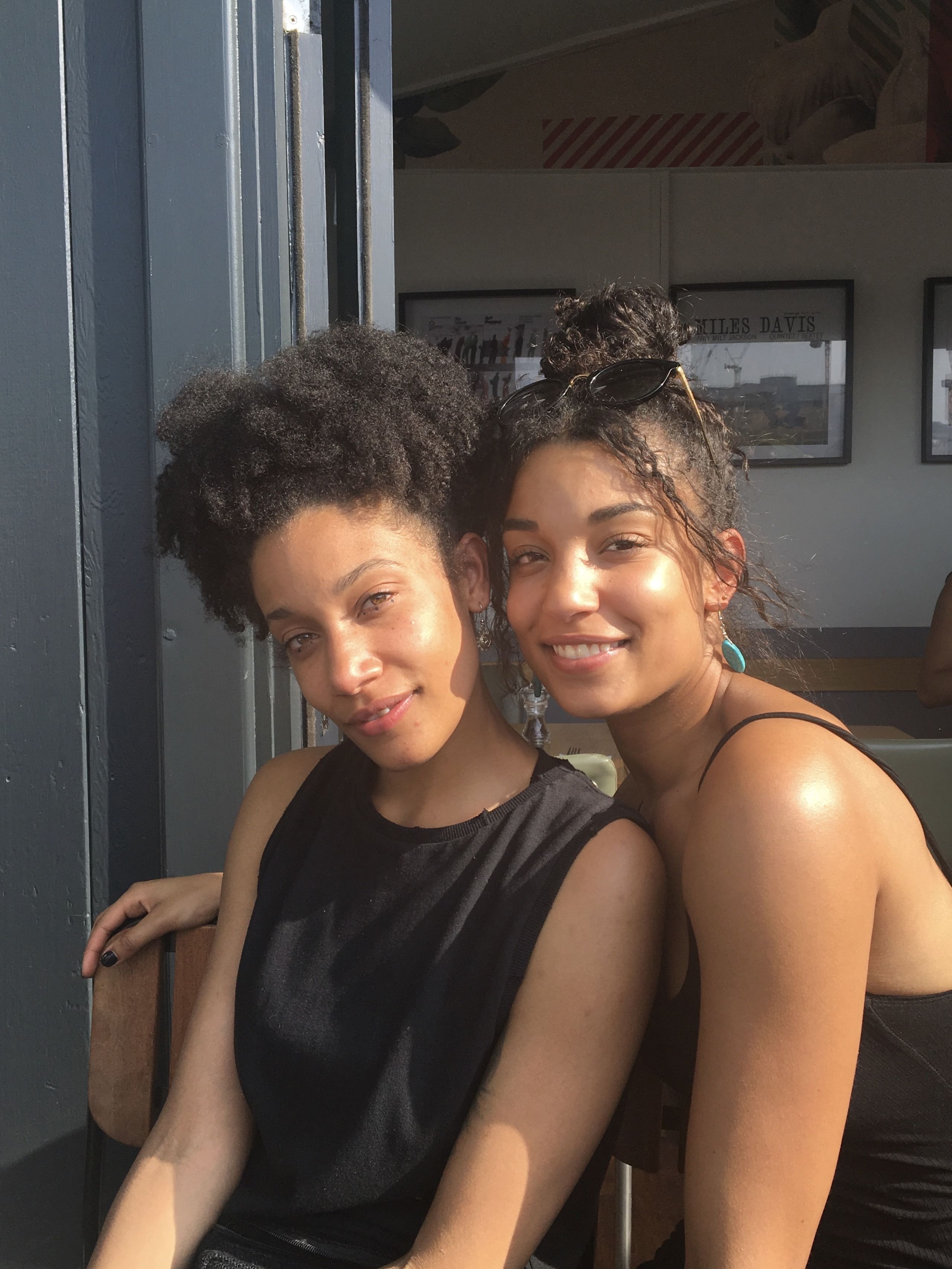
Remember that story of your mother telling you the first time she held you in her arms and how she never thought something could look so cute crying? Or the picture of your grandmother looking exactly like you when she was 15 years old? Or how about knowing the reason for your newborn being ginger is because it runs in your family’s DNA?
These are all answers many adoptees are missing and it's those simple questions that spark the search into their biology. Here are the stories of two completely different adoptees uniting with long lost biological families. Both journeys interwoven with similarities whilst maintaining their uniqueness. This is achieved by digging into history and comparing circumstances pre and post internet. The aim of this multimedia piece is to shed light on adoption and the rollercoaster of outcomes that come with it - no two stories are ever the same.
This is my story.
I was born into an extremely chaotic and unstable environment therefore the decision was made by social services and local authorities to place me into foster care straight from birth. My younger half sister joined me there a year later. In total, my biological mother had four children, one year apart which involved three different fathers. To break it down, there is my older half brother Leon, 25, Lateshia, 24, Lauryn, 23, and Lia, 22. Leon is white caucasian and us three sisters are all of mixed race.
My biological mother had the most unfortunate childhood and left home when she was in her early, vulnerable teenage years which led her to a life of drug addiction and various other dangerous lifestyles. Unfortunately, she died at the age of 23, two years after I was born, so I never got the chance to know her. Whilst trying to cope on the streets, Leon was born in 1995 and after half a year, he was placed into foster care as my birth mother was 18 years old and did not have the means to care for a child. A year later in rehabilitation, she met by birth father and then Lateshia was born in 1996. Both my biological parents lived chaotic, unpredictable lifestyles and my biological dad spent years in and out of prison, leaving his sisters to take on the responsibility of caring for Lateshia.
In 1997, I was born and at this point for unknown reasons, my birth mum chose not put my birth dad in my birth certificate, therefore I was placed directly into care and the same happened with Lia, my younger half sister. This is a key moment in the story because it was at this moment where Lateshia was split from her three siblings.
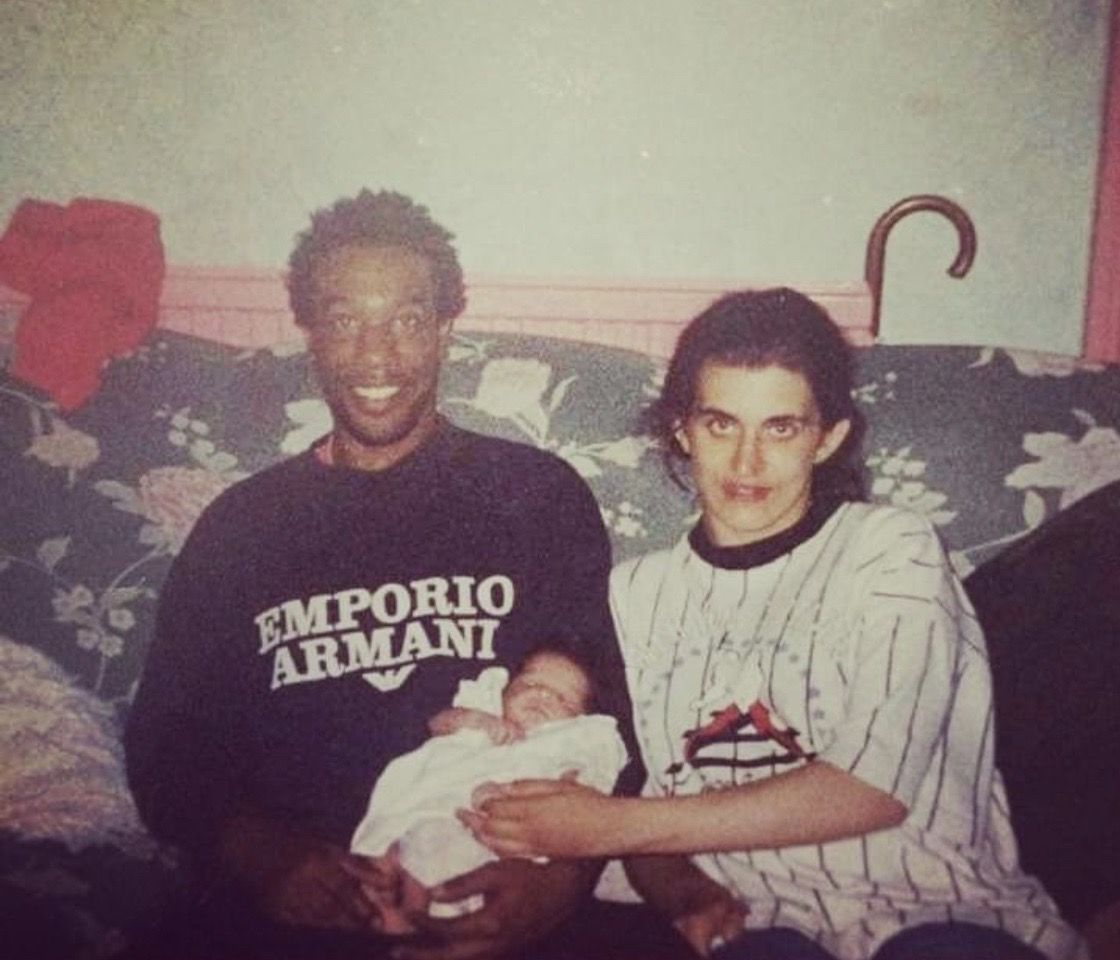
My birth mother and father visiting me in foster care, 1997.
My birth mother and father visiting me in foster care, 1997.
My adoptive parents Agostino and Dominique Pierro (both white caucasian) were unable to have children and after years of trying IVF, they decided to go through the adoption route. I have been mentioning everyone’s race because it played an enormous factor during the adoption process. My adoptive parents had a very smooth adoption process with Leon and they shortly later found out that he had two half, mixed-race sisters in a different foster home. They had the love and care in their hearts to do the most humanly thing possible, which was to keep us all together and instantly enquired about adopting myself and Lia. Little did they know the storm they were about to sail through...
This is the series of events from my adoptive mother's perspective:
After months of fighting the court, the adoption was eventually granted and it was the beginning of a new life for myself and half siblings. I have been fortunate enough to grow up having a happy childhood in Highgate, North London, to Fulham and eventually moving to Toronto, Canada in 2013.
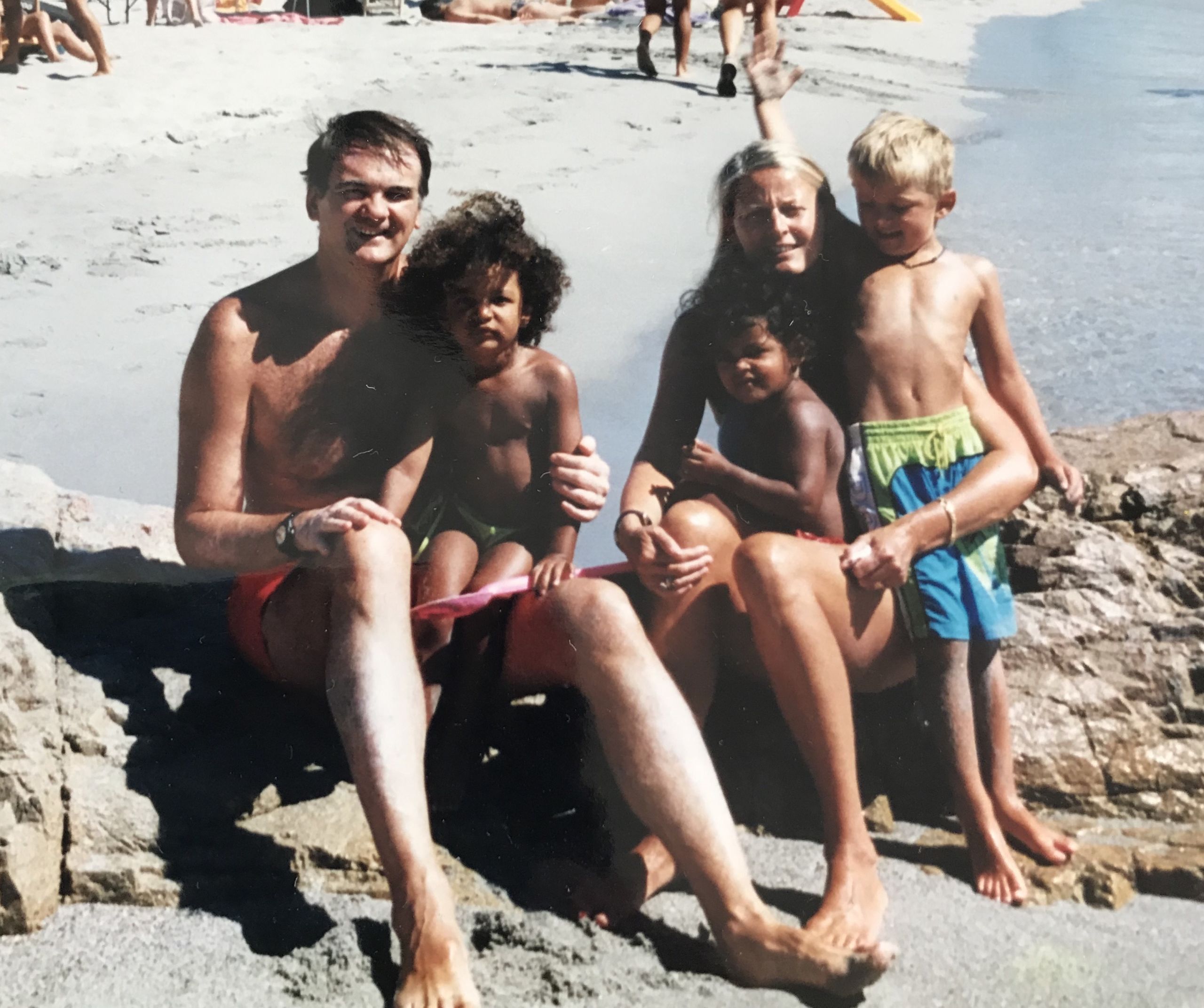
Finally united: my adoptive parents, myself, Lia and Leon in Italy the year of our adoption, 1999.
Finally united: my adoptive parents, myself, Lia and Leon in Italy the year of our adoption, 1999.
In my case, the colour of my skin would have been the direct reason for a failed adoption, forcing me to stay in foster care.
Had this been the case, thinking about where I could have ended up is a tough pill to swallow, so I did some deeper investigations as to why this happened.
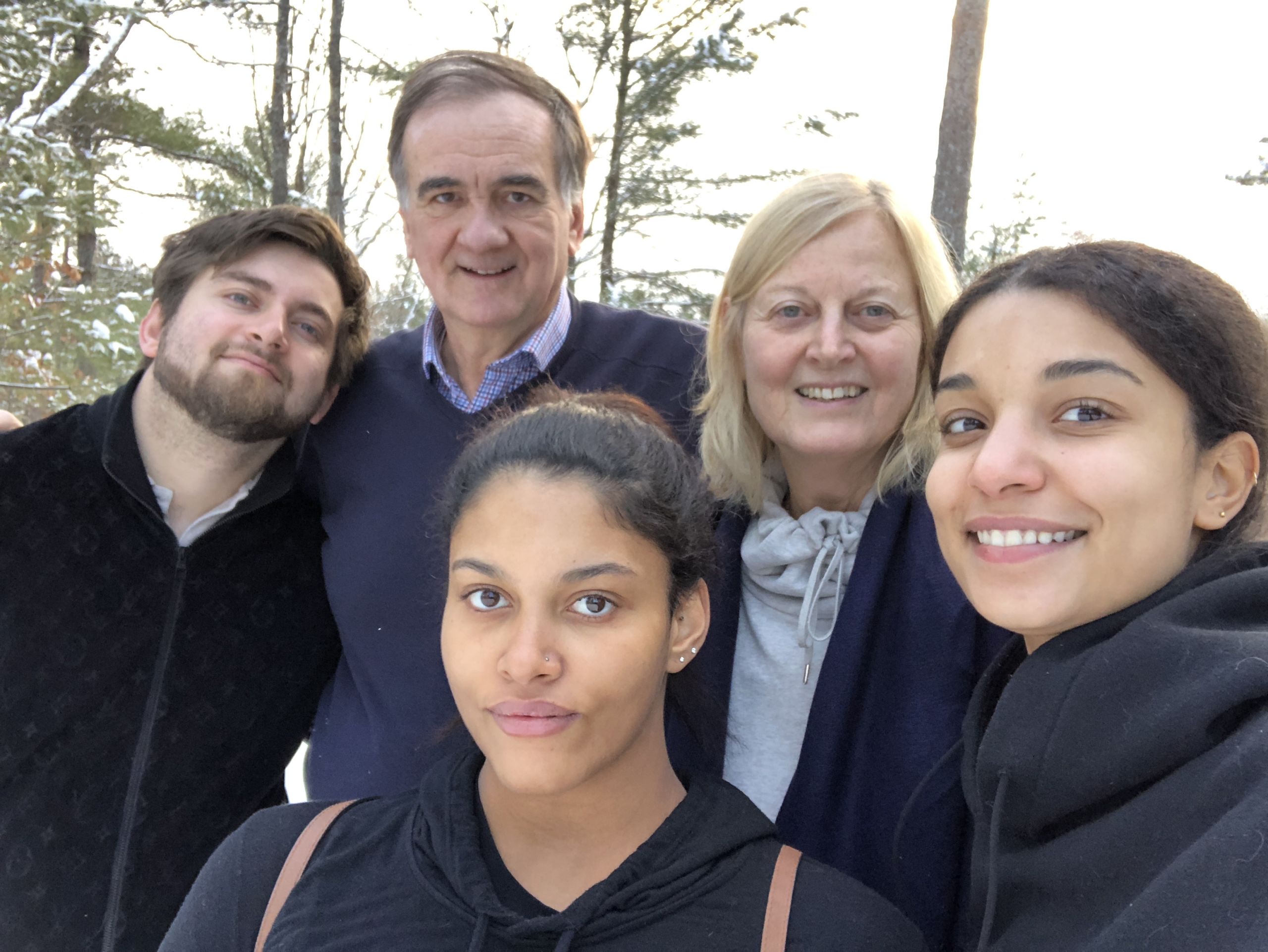
Eager to learn more about interracial adoption, I met with Tim Loughton, the former Children and Families Minister from May 2010- September 2012. He led a range of successful reforms in child protection, sexual exploitation, but worked on adoption specifically. He changed the 2002 Adoption Act in 2014 to essentially force social services and local authorities to not make an adoptees ethnicity, religion or cultural background a prioritising deciding factor above the child’s best interest during the adoption process. This is what he had to say:
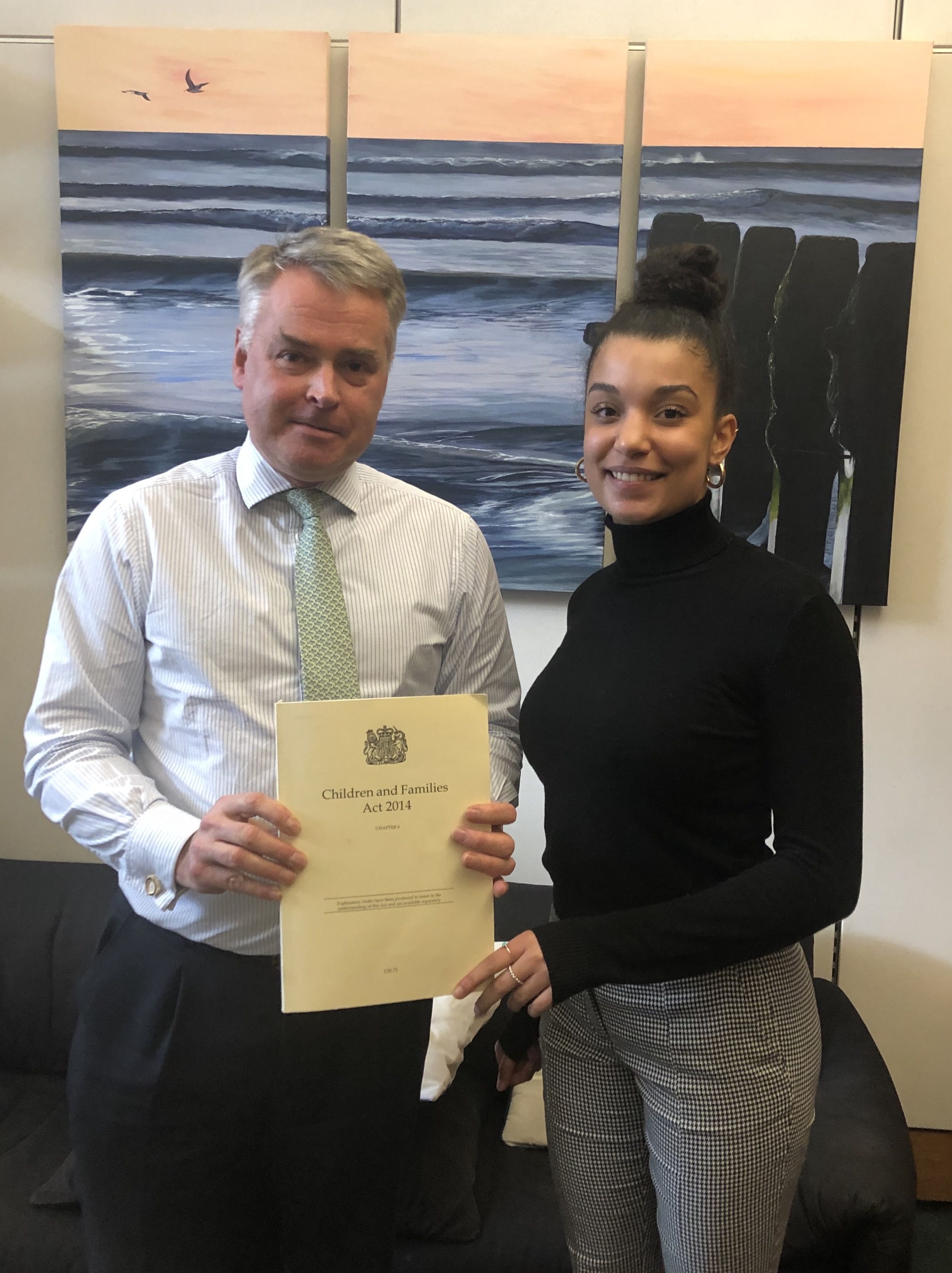
Myself and former MP Tim Loughton, holding the 2014 Children and Families Act on February 26, 2020 in Westminster, London.
After my meeting with Mr Loughton, I wanted to know if the 2014 legalisation has made an impact on interracial adoption. I reached out to Adoption UK, which is the leading charity providing support, community and advocacy for all those parenting or supporting children who are unable to live with their birth parents. They connect adoptive families, provide information and signposting on a range of adoption-related issues and campaign for improvements to adoption policy and legislation at the highest levels. Here is their Adoption Barometer Report.
This is what the Policy and Government Relations Officer, David Squires, had to say:
A lesson learned is that racism has been an unfortunate active part of society and no matter how many laws are put in place, it's the mentality of people that must be adapted in order to put forth positive change in interracial adoption. How can this be achieved? It all starts with educating the younger generations, as they are our future.
I was always aware of the existence of Lateshia, but being present in each other’s lives was not on the cards yet. This all changed on a hot summer’s day in 2015. I received a message from one of my siblings saying “check Facebook,” and there it was. A friend request from my long-lost sister. Our resemblance was canning and sent chills down my spine. I didn’t know whether to cry, scream or jump in joy. This moment was finally happening and I was as ready as a person could be.
In October, 2019, hosted by the inspirational Ingrid Marsh, we appeared on ‘Women’s Radio Station’ in central London to tell the world how on earth this situation happened! Grab your bag of popcorn if you haven’t already- Here it is:
Here is the introduction to the podcast, hosted by Ingrid Marsh.
Lateshia explains the magical moment.
So what happened next?
I remember having extremely mixed feelings the day of our meeting. Will she like me? What if we have nothing in common? Do I hug her or give her a kiss on the cheek? Waiting nervously with my sister Lia, both scanning every person coming out of Brighton train station... and then I locked eyes with her. My long lost sister. My lookalike! The sun started shining on this hot summers day and all the hairs on my body stood up. We all broke down in tears and I hugged her tightly and that was the beginning of this journey. All three of us held hands walking over to the beach front and we just talked, laughed and cried for hours. We spoke about our childhoods, interests, fears and we all just couldn't believe that a lifetime dream was finally a reality!
Since our meet, I have moved back to London to continue my Journalism degree at London South Bank University. We have slowly been building a relationship, taking it step by step. It has not been an easy process but we are strong women and are both embracing this life-changing journey.
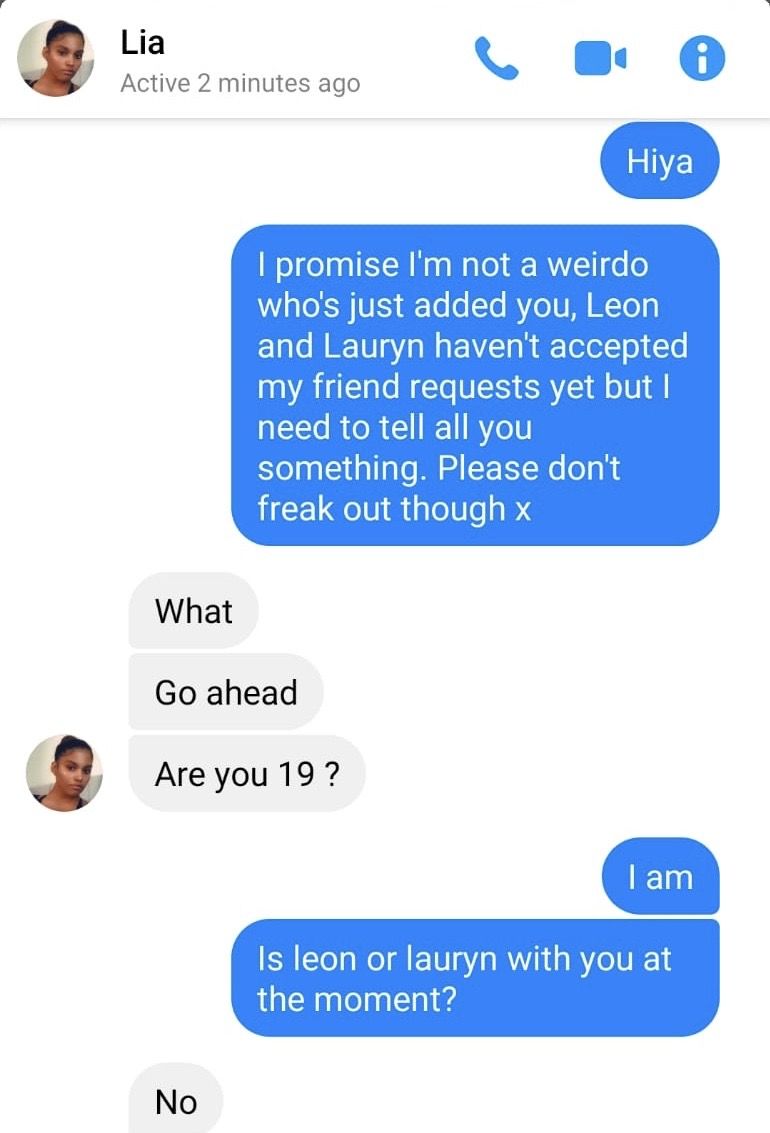
Lateshia messaging my younger sister, Lia.
Lateshia messaging my younger sister, Lia.
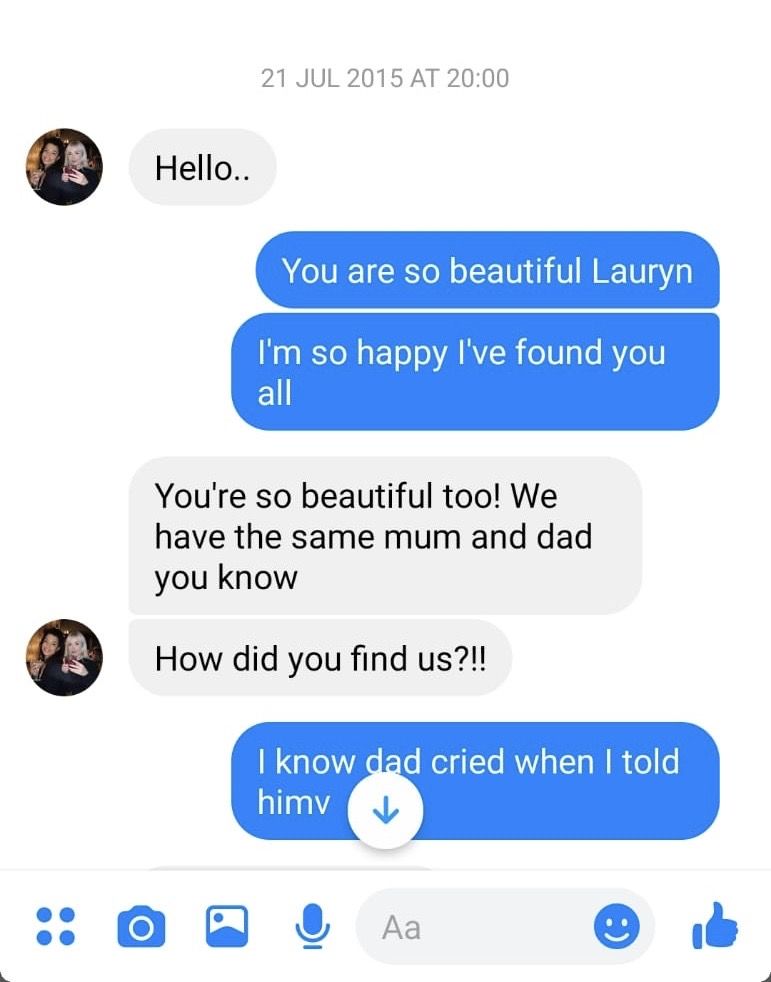
The first Facebook messages between Lateshia and I.
The first Facebook messages between Lateshia and I.
Part 2: Families Lost and Found Pre Internet
Inspired by my personal story, it got me thinking about what happens when adoptees wanted to locate lost or estranged biological family members pre internet? The first social media site, Six Degrees, didn’t surface until 1997 and Facebook was only founded in 2004. Other global social media networks such as Twitter, Instagram and Snapchat came after that. So the question still lingers, how did they do it?
I did some digging and got into contact with Mark Daly, a historical researcher and genealogist. This is what he had to say:
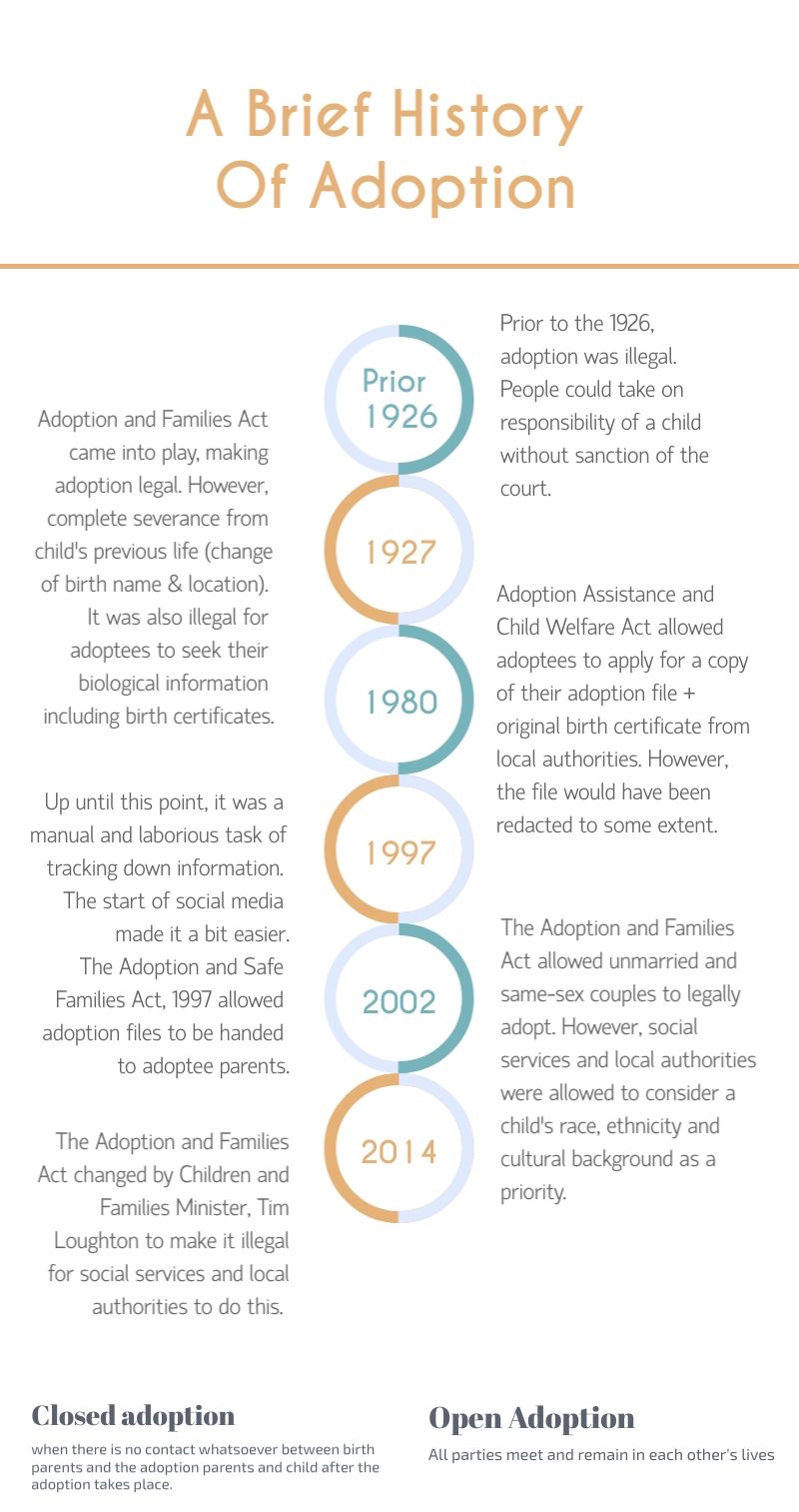
Over the Christmas break, I went back home to Toronto and my parents were having a dinner party with a few friends. My mother got talking to the woman sitting next to her and as the conversation flowed onto various topics, she started telling her about her adoption and how she eventually reunited with her birth mother after a 10 year search and how she then located various other family members. I was shocked when I found this out! I tracked down her phone number and asked if she would be comfortable doing a face-to-face interview and she thankfully accepted.
This is her story.
Susannah Spearin, 50, has been a registered massage therapist since 1991, working in Montreal, San Francisco, New York and Toronto. Her passions include acting and skincare crafting. She is happily married with two daughters and several pets all residing in both downtown Toronto and Prince Edward County.
Six months after being born Susannah, now 50, was adopted into a family living in Toronto, Canada. Similarly to other adoptees, she grew up curious about locating her biological family and having absolutely no information about her biological parents, she was forced to start from ground zero (as it was a closed adoption) and went through Children’s Aid to start the process.
The Adoption & Safe Families 1997 Act enabled adopting parents to obtain the adoptee's adoption file so all the information about the child prior to the adoption would be easy to find. This was not the case for Susannah. Imagine growing up and thinking you know everything about yourself... well in her early 20's Susannah was in for a huge surprise!
The internet and social media had yet to be invented at this point, and as previously mentioned, the journey was a manual and laborious one. So what was the process?
After a lifetime of guessing and speculating what her birth mother looked like, whether they would have similar features and despite all the hurdles thrown her way, the day finally came to meet her. In 2011, the reunion finally happened in Toronto, Canada and after roughly a month of meeting with her birth mother, she was able to connect with family from her paternal side through Facebook. The contrast of having to wait 10 doubtful years pre internet, versus quickly gaining information and simply doing a few Facebook searches, post internet is mind gobbling.
Mark Daly then went to to describe how the process changed after the invention of the internet and social media and how this impacted genealogy.
Adoptees usually do not get a say in their adoption, often due to being young children at the time. It is impossible to tell whether the outcome of an adoption will be successful or not, however, it may leave adoptees with the unanswerable questions; What if? What if my birth mother wanted me? What if I stayed in foster care my whole life? Who am i? Where did I come from? In adoption, these doubtful, rhetorical questions may all be direct reasons for sparking the interest to start the search for their biological families and to get some answers.
Can you answer who, what, why, where, when, how? We are all trying to find our place in this world in one shape or form and tracing down a biological family is such a daunting journey to go through and an incredibly courageous thing to do. Here is some heart-warming advice for those who are thinking about embarking on this journey...
In order of appearance: Lauryn, Lateshia and Susannah.
